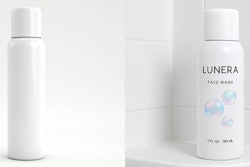Packaging of I-Zone film cassettes has been given the same global treatment as packaging of the I-Zone camera. Made in Mexico, the U.S. and, soon, Scotland, the cassette's primary package is a lamination of metallized polypropylene and an unmetallized PP printed with minimal copy other than a prominent Polaroid logo and the number of exposures. "To make the film cassette package global, we stayed almost generic," says marketing manager Vicki Thomas. "It limits the number of packaging variations. If you put one ounce of text on that package, you'd have to have translated versions for every country in the world. All communication about the film will be carried on the outside folding carton." One of the challenges presented by the carton is size, says Thomas. "From a retail standpoint, we want the smallest carton possible so we can fit more on a shelf. But at the same time, we want to maximize the amount of text, and the text has to be in more than one language. We're still working that one out." Another packaging size issue to surface concerned three-packs of film. Retailers in the U.S. and Europe tend to display them in horizontal racks while the Japanese prefer vertical racks. To accommodate both markets, two separate cartons have been designed.
Polaroid pictures a perfect pack (sidebar)
Global cassette packs, too
Mar 31, 1999
Machinery Basics
Annual Outlook Report: Automation & Robotics
What's in store for CPGs in 2025 and beyond? Packaging World editors explore the survey responses from 118 brand owners, CPG, and FMCG Packaging World readers for its new Annual Outlook Report.
Download
Researched List: Engineering Services Firms
Looking for engineering services? Our curated list features 100+ companies specializing in civil, process, structural, and electrical engineering. Many also offer construction, design, and architecture services. Download to access company names, markets served, key services, contact information, and more!
Download Now
Downloads




















